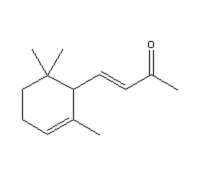let's talk chemistry
Chemistry... pain for many in school. A companion for many years in my life. I studied chemistry some twenty years from now, but still: I feel attracted to it. It is an amazing science; but I move on to biochemistry, which I considered to be more empirical……and was (in the lab) working on the biochemistry of life, so to say, dealing with enzymes that make the building blocks for DNA biosynthesis (DNA being the carrier of genetic information in one’s cells).
Chemistry does not really help me in the design of a fragrance, but for sure it remains an issue, especially as far as safety, purity and reactivity is concerned. Thinking about the thousands of compounds that you mix (by using natural oils and absolutes) and let react while maturation of your perfume base makes you dizzy. It is also fascinating to realize how perceptive our smelling organ is, detecting slightest change in chemical structure: Change the position of one double bond and you go from alpha-ionone to beta-ionone and voila: It smells quite different, easily detected by our nose, in very low dilution.
For all those interested in some chemistry (also covering the synthesis aspects, and chemistry of some natural compounds…such as what’s the main constituent in Sandalwood essential oil, what is responsible mainly for the scent character, …) here’s a reading for you:
Common Fragrance and Flavor Materials, Preparation, Properties and Uses, 4th Edition, by Kurt Bauer, Dorothea Garbe, Horst Surburg, Wiley-VCH, ISBN 3-527-30364-2
And a final note: Heather posted a note on perfume blogs yesterday and mentioned on the side the issue of external reviewing of her products. (Thank you for this, Heather, your blog is an inspiration and always full of “yes, exactly, that’s the point for me, too….”) Reviewing and feedback, for me, this is key, too. It starts very early. I am very dependent of getting input, critics, feedback: Right from the start. When I make my first thoughts about main lines for a new perfume, when I work on finetuning the storyline, when I decide about the optimal dilution. Here, my grateful thanks to Vero in the first place, who is a friend, a perfumer of her own with compositions I can only dream of and who always provides lovely feedback. And there is my friend, being an ideal consumer nose (my 1-person peer customer group).



0 Comments:
Post a Comment
<< Home